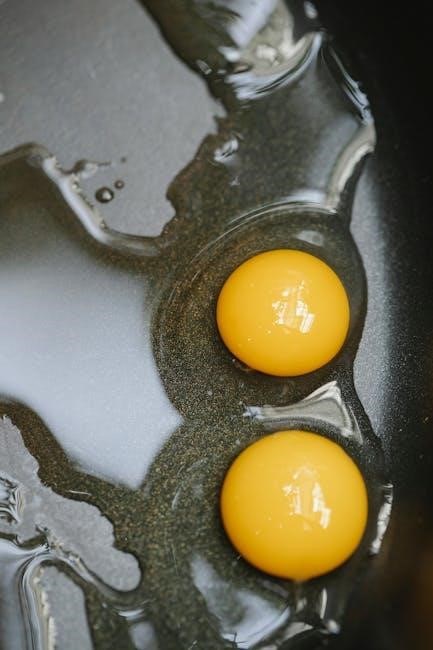Boiling a mouthguard is a common method to customize its fit by softening the thermoplastic material, allowing it to mold to your teeth for better protection and comfort.

Materials Needed for Boiling a Mouthguard
To properly boil and fit a mouthguard, you will need a few essential materials. Start with a small pot or saucepan to boil water, ensuring it can hold enough water to fully submerge the mouthguard. A spoon or tongs are necessary for safely placing and removing the mouthguard from the hot water. A timer or stopwatch is also crucial to monitor the boiling and cooling times accurately. Additionally, a heat-resistant mug or container is often recommended for soaking the mouthguard after boiling. Some instructions suggest having ice water ready for cooling the mouthguard after boiling, though this step may vary depending on the model. Finally, a clean, dry surface or paper towels are useful for handling the mouthguard once it’s removed from the water. Having all these materials prepared beforehand ensures a smooth and efficient process.

Preparation Steps Before Boiling
Before boiling, fill a pot with enough water to submerge the mouthguard, bring it to a boil, and ensure the mouthguard is clean and ready for shaping.
3.1. Cleaning the Mouthguard
Cleaning the mouthguard before boiling is essential to remove any dirt, bacteria, or odors. Use mild soap and warm water to gently scrub the mouthguard with a soft toothbrush. Avoid using harsh chemicals or abrasive materials, as they may damage the material. Rinse thoroughly under clean water to ensure all soap residue is removed. This step ensures the mouthguard is hygienic and ready for the boiling process, allowing it to mold properly without any contaminants. Proper cleaning also helps maintain the mouthguard’s quality and longevity. Always follow the manufacturer’s cleaning instructions if provided. This step is crucial for a safe and effective fitting process.
3.2. Preparing the Boiling Water
To prepare the boiling water, fill a small pot with enough water to fully submerge the mouthguard. Place the pot on a stove and bring the water to a rolling boil. Once boiling, reduce the heat slightly to maintain a steady boil. Ensure the water is hot enough to soften the thermoplastic material but not so hot that it causes the mouthguard to deform. Some instructions recommend letting the water stand for 30 seconds after boiling to achieve the optimal temperature. Use this time to prepare the mouthguard and any tools, such as tongs or a slotted spoon, for handling it safely. Properly heated water is crucial for softening the mouthguard without damaging it, ensuring a successful fitting process.

The Boiling Process
Submerge the mouthguard in boiling water using tongs or a spoon, ensuring it is fully covered. This step softens the material for proper shaping and fitting.
4.1. Submerging the Mouthguard
Submerging the mouthguard in boiling water is a critical step to soften the thermoplastic material. Use tongs or a slotted spoon to carefully place the mouthguard into the water, ensuring it is fully submerged. This ensures even softening. Keep it in the water for the recommended time, typically 20–60 seconds, depending on the model. Avoid leaving it too long, as this could cause distortion. Once submerged, let it sit undisturbed to allow the material to become pliable. After the recommended time, carefully remove it with tongs or a spoon, being cautious of the hot water. Proper submersion ensures the mouthguard will mold correctly to your teeth during the fitting process.
4.2. Recommended Boiling Time
The recommended boiling time for a mouthguard typically ranges between 20 to 60 seconds, depending on the model and material. Most instructions suggest submerging the mouthguard in boiling water for 30-60 seconds to ensure it softens adequately for shaping. Overheating can cause distortion, so it’s crucial to follow the manufacturer’s guidelines. For strapped mouthguards, attach the tether before boiling to prevent it from coming loose. Use a timer to monitor the boiling time accurately. Once the time is up, carefully remove the mouthguard with tongs or a slotted spoon to avoid burns. Proper boiling ensures the material becomes pliable without losing its structural integrity, making it ready for the fitting process.
4.3. Cooling the Mouthguard
Cooling the mouthguard after boiling is essential to prevent burns during the fitting process. Once removed from boiling water, carefully place the mouthguard in a bowl of cold water or under a slow stream of cool tap water for 10-15 seconds. This step helps stop the cooking process and lowers the temperature to a safe level for handling. Some instructions suggest immediately placing the mouthguard into the mouth after cooling, while others recommend letting it cool slightly before shaping. Ensure the mouthguard is not too hot to cause discomfort or burns. Proper cooling ensures the material retains its shape and adheres correctly to your teeth during the fitting process. Avoid using ice, as it may harden the material prematurely, making it difficult to mold.

Fitting the Mouthguard
Fitting involves placing the cooled mouthguard in your mouth and biting down gently to mold it to your teeth for a secure, personalized fit.
5.1. Placing the Mouthguard in the Mouth
After boiling, carefully remove the mouthguard from the water with a slotted spoon or tongs. Allow it to cool slightly to avoid burns. Gently place the mouthguard over your upper teeth, ensuring it covers all necessary areas. Hold it firmly in position with your fingers, making sure it aligns properly with your dental structure. Take a moment to adjust its placement if needed for optimal coverage and comfort. Proper alignment is crucial for both protection and ease of use during activities. Once in place, proceed to the next step of shaping it by biting down.
5.2. Biting Down to Shape the Mouthguard
Once the mouthguard is placed in your mouth, bite down firmly but gently to shape it around your teeth and gums. Ensure the bite is consistent and even, applying pressure for about 10-15 seconds. This step is crucial for creating a snug, personalized fit. Be careful not to bite too hard, as this could cause unnecessary distortion. After biting down, hold the mouthguard in place for a few seconds to allow it to start cooling and forming to your dental structure. Once you release, check the fit by ensuring it feels secure and comfortable. If needed, make slight adjustments by biting down again. Proper shaping ensures optimal protection during sports or other activities. Avoid overheating or overworking the mouthguard, as this can compromise its integrity.
5.3. Checking the Fit
After shaping the mouthguard by biting down, carefully remove it from your mouth and inspect it visually. Ensure it covers all teeth and gums evenly, with no excess material overlapping the gum line. The fit should feel snug and secure, providing adequate protection without causing discomfort. Check for any air pockets or gaps between the mouthguard and your teeth, as these can reduce its effectiveness. If the fit feels too tight or loose, minor adjustments can be made by reheating and reshaping. It’s important to ensure the mouthguard stays in place without constant biting, allowing for easy breathing and speaking. Proper fit is essential for both comfort and protection during sports or high-impact activities.
5.4. Allowing the Mouthguard to Cool
Once you’ve bitten down to shape the mouthguard, it’s crucial to let it cool completely before using it. Cooling allows the thermoplastic material to harden again, ensuring the custom fit you’ve created is maintained. Avoid rushing this step, as premature use can distort the shape or cause the mouthguard to lose its mold. After removing it from your mouth, place the mouthguard on a clean, flat surface to cool naturally. Do not submerge it in cold water or use ice, as this could cause uneven hardening. Allow at least 10-15 minutes for the mouthguard to fully cool and harden. Once cooled, it should feel firm and retain its shape. Proper cooling ensures durability and optimal protection during use.

Trimming Excess Material
After cooling, you may notice excess material around the edges of the mouthguard. Trimming this is essential for comfort and proper fit. Use sharp scissors or a craft knife to carefully remove any excess plastic, ensuring not to cut too close to the molded area. Trim in small increments, checking the fit periodically to avoid removing too much material. Pay particular attention to the edges around the gums and back molars, as these areas can cause discomfort if left untrimmed. Once trimmed, smooth any rough edges with a file or fine-grit sandpaper. Proper trimming ensures the mouthguard stays comfortable while maintaining its protective qualities. Avoid over-trimming, as this could compromise the mouthguard’s structural integrity and effectiveness.

Care and Maintenance
Clean the mouthguard regularly with mild soap and warm water. Rinse thoroughly and allow it to air dry to prevent bacteria growth.

Store the mouthguard in a protective case when not in use to maintain its shape and prevent damage or distortion over time.
7.1. Cleaning the Mouthguard
Regular cleaning is essential to maintain hygiene and extend the lifespan of your mouthguard. Start by rinsing it under cold running water to remove any loose debris or saliva. Use a mild soap solution or toothpaste with a soft-bristled toothbrush to gently scrub the entire surface, paying attention to both the inner and outer sides. Avoid using harsh chemicals, abrasive cleaners, or hot water, as these can damage the material or cause warping. After cleaning, rinse thoroughly with cold water to remove any soap residue. Gently pat the mouthguard dry with a clean towel and allow it to air dry completely before storing it in its case. Cleaning your mouthguard after each use will help prevent bacteria buildup and keep it fresh for optimal performance.
7.2. Storing the Mouthguard
Proper storage is crucial to maintain the shape and hygiene of your mouthguard. Always store it in a protective case when not in use to prevent damage or warping. Ensure the case is clean, dry, and vented to allow airflow, which helps prevent bacteria growth. Avoid storing the mouthguard in direct sunlight, extreme temperatures, or humid environments, as these can cause the material to degrade. Never leave the mouthguard loose in a bag or exposed to sharp objects, as this can lead to scratches or tears. If you’re traveling, keep the mouthguard in its case to protect it from pressure or impact. Additionally, avoid sharing the case with others to maintain cleanliness. By storing your mouthguard properly, you can ensure it remains in good condition and continues to provide effective protection during use.
7.3. Signs of Wear and Tear
Over time, your mouthguard may show signs of wear and tear, indicating it needs replacement. Look for thinning areas, cracks, or discoloration, which can weaken its protective properties. If the mouthguard becomes loose or no longer fits securely, it may not provide adequate protection during sports or activities. Additionally, if the mouthguard develops an unpleasant odor that persists despite proper cleaning, it could be a sign of bacteria buildup or material degradation. Regularly inspect your mouthguard for these signs, and consider replacing it if any of these issues are noticeable. Typically, a well-maintained mouthguard lasts for one to two years, depending on usage and care. Replace it immediately if you notice significant damage or if it no longer feels comfortable or secure in your mouth.

Troubleshooting Common Issues
Common issues include improper fit, distortion, or a too-tight bite. Re-boiling or adjusting the mouthguard can resolve these problems. Ensure proper cooling before re-shaping for optimal results.
8.1. Mouthguard Too Tight
If the mouthguard feels too tight, it may cause discomfort or difficulty breathing. To fix this, re-boil the mouthguard and let it cool slightly before re-shaping it.
- Re-boil the mouthguard for 10-15 seconds to soften the material again.
- Carefully remove it with a spoon or tongs and let it cool for a few seconds.
- Gently stretch or reshape the mouthguard to reduce tightness, ensuring it still covers all necessary areas.
- Place it back in your mouth and bite down lightly to adjust the fit without over-tightening.
If the issue persists, consider trimming excess material from the edges or consulting a professional for a custom fit.
8.2. Mouthguard Too Loose
If the mouthguard feels too loose, it may not provide adequate protection. To fix this, re-boil the mouthguard and ensure proper molding during the cooling process.
- Re-boil the mouthguard for the recommended time, usually 30-60 seconds, to soften it again.
- Remove it carefully with a spoon or tongs and let it cool for about 10-15 seconds.
- Place it in your mouth and bite down firmly to reshape it, ensuring it fits snugly around your teeth.
- Use a mirror to check the fit and make adjustments as needed.
If the mouthguard remains loose, you may need to trim excess material or consider a custom-fit option for better security and comfort.
8.3. Distortion of the Mouthguard

Distortion can occur if the mouthguard is overheated, submerged incorrectly, or cooled improperly. To fix this, follow these steps:
- Re-boil the mouthguard: Place it in boiling water for the recommended time to soften the material again.
- Handle with care: Use tongs or a slotted spoon to avoid stretching or misshaping the mouthguard while removing it from the water.
- Allow proper cooling: Let it cool slightly before placing it in your mouth to reshape it evenly.
- Reshape carefully: Bite down gently but firmly to mold the mouthguard back to its correct form without applying too much pressure.
- Check the fit: Ensure it aligns properly with your teeth and provides a snug, secure fit.
If distortion persists, consider starting over or using a new mouthguard to ensure proper protection and comfort.
Boiling a mouthguard is a straightforward process that ensures a custom fit for optimal protection and comfort. By following the steps outlined, you can achieve a secure and comfortable fit. It’s crucial to adhere to the recommended boiling time and cooling process to avoid distortion. Proper care and maintenance will extend the mouthguard’s lifespan, ensuring it remains effective. Always monitor for wear and tear, and address any issues promptly. If fitting challenges arise, troubleshooting common problems can help resolve them. Remember, a well-fitted mouthguard is essential for protecting your teeth and mouth during sports and activities. With the right technique, you can enjoy a durable, reliable mouthguard tailored to your needs. Regular cleaning and storage will maintain its quality, ensuring it continues to provide excellent protection for years to come.